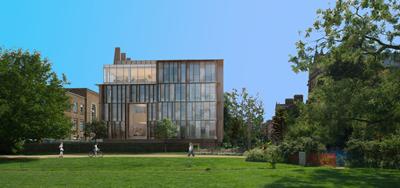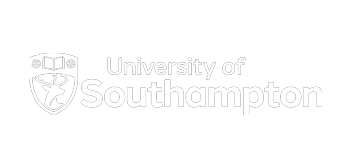Designing low-vibration laboratories
The University of Southampton’s Institute of Sound and Vibration Research (ISVR) is helping world-leading scientists to carry out complex experiments successfully.
Laboratory researchers examining material at the atomic level need to work in perfect environmental conditions as unwanted vibration can affect their equipment. Dr Christos Karatsovis and colleagues from ISVR Consulting contribute their expertise to the design of new buildings for universities and research institutes, working alongside architects and project managers to identify the causes of vibration and reduce its future impact.
Image courtesy of Beecroft, where the noise and vibration assessment and design for the laboratories was subcontracted to ISVR Consulting.

The Beecroft Building at the University of Oxford
Unwanted vibration threatens experiments
Many of today’s sophisticated research equipment is particularly sensitive to vibration. Laboratory experiments may use high precision lasers, lithography and atomic or sub-atomic microscopes, and can take months or years to complete.
Christos explains: “The easiest way to appreciate the impact of vibration in real life is to take a picture with your smart phone. If your hand is steady, you will get an image which is sharp and in focus. However, if your hand is shaky, the picture will be blurred. The vibrations from shaking your hand will result in an out-of-focus image. Now, imagine you are trying to explore the world of atoms in a physics experiment with a high precision microscope. If there are unwanted vibrations in a building, you will start seeing similar undesirable effects. Essentially, something that happens on a macroscopic scale can have a profound effect on a microscopic scale and beyond. Everything is intertwined.”
Buildings can be affected by vibration from many external and internal sources such as traffic, air conditioning units and even people walking in corridors. Even the state of nearby roads is important to consider as potholes and speed bumps can be significant. Christos advises clients on how vibration will affect buildings that could last for many decades to come.
“As projects can last for several years, there is a great sense of achievement and relief when the building is finally complete and the plans on paper eventually become a structure in the real world. In the end, it is very rewarding to provide specialist advice for a building which will house cutting-edge research work to transform future lives,” he adds.
Assessing vibration levels and advising on solution
In his consultancy projects, Christos first carries out a baseline survey to identify prevailing conditions in the area surrounding the proposed new building. He assesses current and potential levels of vibration around the clock, then puts together a computer model to understand the predicted dynamic interactions within the structure. This process can take several months. Throughout the project, he liaises closely with designers and architects to give them an accurate picture of the impact of vibration as plans progress and the building takes shape.
This area of vibration research within buildings began with the start of the semiconductor industry in the 1980s as computer engineers started to miniaturise electrical circuits. Researchers soon realised the success of accurate microchip fabrication depended on the manufacturing environment and often found even small levels of vibration caused real problems. With the introduction of smart phone technology and more powerful computers, circuits became ever smaller and brought more challenges for manufacturers.
Further information
See Vibration modelling and performance evaluation of specialist buildings: a designer’s approach, by Christos Karatsovis and Malcolm Smith.
Vibration researcher moves into consultancy
Dr Christos Karatsovis is a senior engineer at ISVR Consulting, founded in 1968 and one of the earliest organisations linking university researchers with industrial partners.
Fascinated by the science of sound and a keen musician, Christos took his bachelor’s degree in Noise and Vibration Engineering at the University of Southampton and stayed on to study for an MSc and PhD. After a spell in mainstream consultancy, he returned to Southampton. He enjoys the challenges that each project brings: “A good engineer is a creative engineer, you need to think outside the box and see issues from different perspectives. Professionals from several engineering disciplines often need to come together to solve problems and I’m pleased I can work with colleagues in the Faculty and elsewhere in the University to find the answers.” In addition to his ‘day job’ Christos also relishes teaching undergraduate and postgraduate engineers the principles of sound.
Fifty-plus years of cutting edge sound and vibration research
Engineers at ISVR have been studying sound and vibration for more than 55 years and former students are now in senior positions in industry and academia.
Staff at ISVR Consulting apply this knowledge in a wide range of projects. A recent assignment saw our staff advise Saint-Gobain in Bristol in the design and setting up of a semi-anechoic chamber to measure squeak and rattle noises alongside vibration in vehicles and test its own products.
ISVR Consulting has its own suite of reverberation chambers and a large anechoic chamber with a development laboratory and other specialist equipment.
Its team of professional engineers and support staff welcome approaches from potential clients in the UK and across the world who need advice from researchers at the forefront of their discipline. Current work involves customers in the automotive, marine, rail, industrial and built environment sectors, as well as emergency services and defence, and occupational noise.

